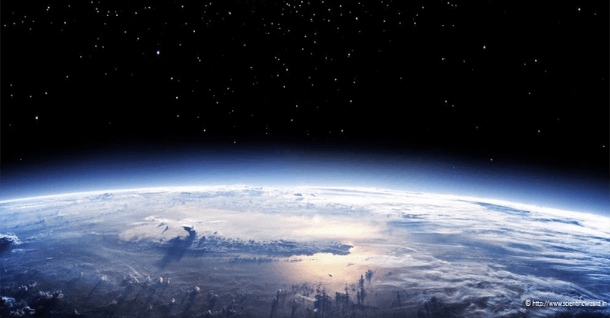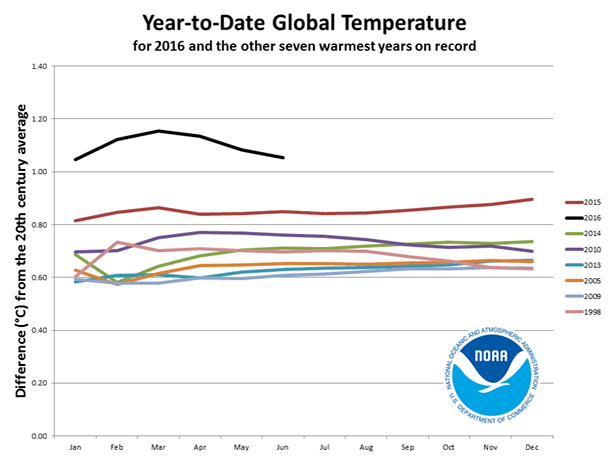
Eight months after the historic Paris Agreement on climate change was finalized, international activities to address this looming danger no longer command the media’s attention – even as the world has experienced 14 consecutive months of record heat, according to the National Oceanic and Atmospheric Administration.
On July 14, the temperature reached an unprecedented 85° F – not in New York or Texas, but on the North Slope of Alaska, on the shores of the Arctic Ocean!
But out of the limelight, United Nations processes are delivering signs of progress and reasons for hope. Here are four:
1. The UN Secretary-General continues to push for faster action.
In order for the Paris Agreement to “enter into force,” it must be officially approved by at least 55 countries, representing at least 55% of the world’s emissions. UN Secretary-General Ban Ki-moon has asked leaders from all countries to attend a special event on September 21, during the annual opening of the General Assembly in New York, and to bring their documents of approval of the Paris Agreement – or, if they are not ready, to commit publicly to joining before the end of 2016.
Earlier this year, on April 22 – Earth Day, appropriately enough – 175 countries signed the Paris Agreement. Signing is the first step toward joining the Agreement and must be followed by formal ratification or acceptance. So far, 19 countries have ratified the Agreement. Many others, including the United States and China, have publicly committed to joining this year.
The Paris Agreement was a breakthrough on climate change, as 195 countries agreed to limit global temperature rise to “well below 2 degrees” Celsius (3.6°F), while pursuing efforts to keep temperature rise to 1.5 degrees C (2.7° F). This year the world is already experiencing temperatures that are more than 1 degree C (1.8° F) above the average for the 20th century.
Take a look at the chart below – it is astonishing. It shows the month-by-month temperature increase for the warmest years ever measured (all of them since 1998). The top line shows the first six months of 2016 – not only the highest ever, but by a huge margin compared to 2015, which broke the previous record!

2. Scientists are tackling key questions.
The Paris Agreement alone is not enough to get us to a stable climate, but it is an important step toward that goal, and all the world’s countries have pledged to review their progress every five years and to consider steps to increase ambition.
Prior to the next review in 2018, the UN’s Intergovernmental Panel on Climate Change (IPCC) – a voluntary collaboration of the world’s leading experts –has agreed to provide new special reports on three topics:
1. What we need to do to stay under the goal of 1.5 degrees C.
2. What climate change means to the world’s oceans – including sea-level rise and ocean acidification.
3. How better management of the world’s forests and farmland can help absorb more carbon dioxide.
These are important areas of study that should clarify the challenges we face and point the way toward exciting new opportunities for action.
3. New leaders are stepping up.
Christiana Figueres, who helped bring about the Paris Agreement as the leader of the UN Framework Convention on Climate Change, has declared her candidacy for Secretary-General.
Regardless of how that turns out, it is a stunning indicator of how this topic has risen in importance around the world, and it will require all the candidates for Secretary-General to indicate how they will emulate the remarkable leadership of Ban Ki-moon on climate change.
Figueres’s successor at the UNFCCC, Patricia Espinosa of Mexico, has already won wide praise for her negotiating skills and understanding of the issue.
4. Negotiators are making progress on other heat-trapping gases.
To protect the world’s ozone layer, which keeps us safe from ultraviolet radiation, countries agreed 30 years ago to phase out the use of certain destructive chemicals, typically used in refrigeration and aerosols. The atmosphere is very slow to heal, but this summer scientists reported reliable evidence that the ozone “hole” over the Antarctic is shrinking.
The previous agreement did not cover all the key ozone-depleting chemicals, however, and after seven years of talks, international negotiators last week settled on new language to ban the use of hydrofluorocarbons, or HFCs, which are not only bad for ozone but also 1,000 times worse for global warming than carbon dioxide. This means a new deal can be reached at an October meeting in Rwanda.
Achieving a stable climate and a world that remains livable for humans and other creatures remains a daunting task – the most important task of the 21 st century. The good news: Not just the UN, but governments, businesses, and citizens everywhere increasingly are responding to the challenge with action to put us on a better path.



 View All Blog Posts
View All Blog Posts